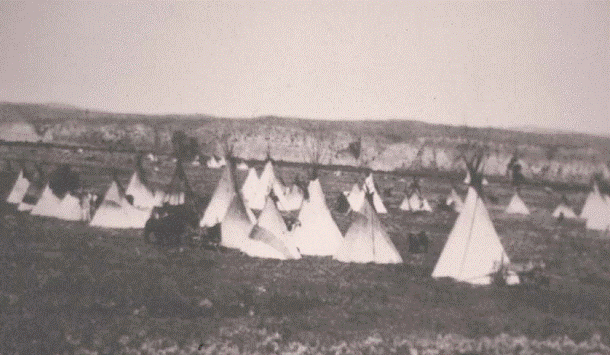
NPS For over 10,000 years, Bighorn Canyon has been home to untold generations of people. These “people of the canyon” followed an ancient trail, which led from the mouth of Bighorn Canyon, south through the Bighorn Basin and eventually to the Wind River Mountains. The winter months were spent deep in the canyon recesses, in caves and rock shelters. The summer months were spent in the cool mountain air of the Wind River and Pryor Mountains. Over time, these people disappeared and more recently, tribesmen and wanderers made their way to, and through Bighorn Canyon. “Children of the Large Beaked Bird” The Crow people arrived in the Bighorn country in the early 1700’s. from the time of their arrival, they were constantly being challenged, to call this land home. Strong tribes from every direction contested the Crow’s claim to this land. From the North and the West, they fought the Assiniboine, Blackfeet, and Flatheads. The Sioux and Cheyenne harassed them from the East. Often outnumbered and constantly at war, they were gradually forced west of their beloved Bighorns. Throughout the area, battlefields, and fortifications mark the landscape as reminders of their defense. The Struggle For Home By 1876, the Crow people only dared to cross the Bighorn River in strong war parties. That year, under the leadership of their great warrior Chief Plenty Coups, they allied with the United States government in the Indian Wars of 1876. Allies and Saving Lives For their help in the Indian Wars, the U.S. Government promised to reserve land in the valley of the Bighorn River and Bighorn Mountains for the Crow people. Now they could finally be allowed to live in peace and to roam their sacred lands. If you go to the South you have to wander over great barren plains; the water is warm and bad, and you meet the fever and ague. To the north it is cold; the winters are long and bitter, with no grass; you cannot keep horses there, but must travel with dogs. What is a country without horses? On the Columbia they are poor and dirty, paddle about in canoes, and eat fish. Their teeth are worn out; they are always taking fish bones out of their mouths. Fish is poor food. To the east they dwell in villages; they live well; but they drink muddy water of the Missouri - that is bad. A Crow’s dog would not drink such water. About the forks of the Missouri is a fine country; good water; good grass; plenty of buffalo. In summer, it is almost as good as the (Crow) country; but in winter it is cold; the grass is gone and there is no salt weed for the horses. The Crow country is in exactly the right place.” |
Last updated: May 11, 2022
